by Susan Taylor Block
(Click on images to magnify. Click again and scroll to see more.)
“It should be heralded in clarion tones that Wilmington glories in its wealth of flowers, trees, plants and shrubs,” wrote Louis T. Moore, a champion of Greenfield Gardens. The earliest Greenfield tradition is of a woman’s posing as the sister of King George III, in 1761. She requested her two suitors climb cypress trees to gather Spanish moss for her. Both of them slipped and fell into the murky waters – and the unknown prankster merely laughed. Greenfields’ Garden was the name original owner Samuel Green, M.D., gave the property when he first operated it as a rice plantation, about 1770. (497)
From 1900 until about 1924, the lake was called McIlhenny’s Pond after owner Thomas Cowan McIlhenny. Swimmers, risking alligator attacks and impetigo, flocked to the lake during summer. “Here we learned to swim, to float, to duck each other, to race and to execute all the water sports that a boy can create,” wrote author Henry Bacon McKoy. During that era, boys discovered small Civil War-era cannons near the lake. The City of Wilmington used the barrels as rudimentary markers for street corners.
Thomas Cowan McIlhenny rented rowboats. According to the late Helen Weathers McCarl, “many a young man courted his sweetheart among the water lilies and cypress trees.” In the mid-1920s, when the mill was sold to a carnival, nature lovers, and just lovers, were horrified when the new owners enclosed the four-acre lake site with a high board fence and constructed small huts and outhouses.
“Greenfield has a public tourist camp. All modern city conveniences are available. Greenfield’s boardwalk is to be replaced with cinder paths or with cement,” stated the Morning Star, in 1924. (515)
In 1925, the City of Wilmington, with strong urging from Mrs. R. W. Hicks, Carl Rehder, J. E. L. Wade, Louis T. Moore, North Carolina Sorosis, and Cape Fear Garden Club, purchased the 148-acre lake and the surrounding property. When J. E. L. Wade, Commissioner of Public Works, encouraged citizens to donate bulbs and civic groups to beautify designated areas, the community responded. In addition to the predictable flowering plants, contributions included cabbages and turnips. Pender County resident T. J. Armstrong donated an entire dwarf palmetto thicket and George Trask brought truckloads of flora and fauna.
Vandalism wasn’t ignored. Like a botanical version of Community Watch, citizens offered a five-dollar reward “for help in convicting parties responsible for damaging a japonica bush at Greenfield Lake.” (502)
During the Depression, unemployed men earned money by building a road around the Greenfield Lake. Many employed Wilmingtonians underwrote the project by donating one day’s pay each month to create jobs for the hungry. It was an unusual, close-range “make-work” project. Many of the men who pushed wheelbarrows and shoveled dirt had lost good desk jobs when the economy collapsed.
The government subsidized the work force by adding incarcerated individuals to the list. “Instead of prisoners playing cards, President Hoover had them put a road all around that lake,” said Mary Etta Fields in 1999. “They were out there on the hottest days with chains on.”
In 1939, the Greenfield Drive Association, led by Dr. Houston Moore, John Spillman and Louie Woodbury, was incorporated to further embellish lakeside beautification. (484)
The 1934 Lions’ Club Easter Egg Hunt at Greenfield Lake was a community project. In addition to thousands of eggs, area merchants offered a hundred prizes including one gold and one silver egg that represented cash gifts. Eastern Star members, including Mrs. John J. Burney and Mrs. George Pritchard, decorated the eggs. Louis T. Moore displayed his photographs of the hunt at the Chamber of Commerce in an exhibit noted in the Wilmington Star News, April 5, 1934: “2,000 children and even a larger crowd of parents and spectators attended.” (489)
“Members of the Lion’s Club will be stationed nearby under fancy umbrellas,” reported the Morning Star. The men under the parasols were ready to register marked boiled eggs for gifts furnished by local businesses like Huggins’ Jewelers, the Wilmington Star News, Belk-Williams, Efird’s, Kingoff’s Jewelers, Saffo’s, Will Rehder Florist, and Hall’s Drug Store. (616)
The Greenfield Lake Zoo was located on the west side of South Third Street, across from the pavilion. The zoo population grew quickly. Wilmingtonians contributed many animals including Belgian hares, baby alligators, a black eagle, little foxes and a crow. Alex McEachern, owner of Echo Farms Dairy, donated milk for small animals. In 1932, when a deer named Billy Boy succumbed after being overfed, his obituary appeared in the newspaper.
In 1966, the entrance was adorned with two 400-pound stone lions that once graced Pembroke Jones’s hunting lodge (now Landfall). One night in 1925, they were whisked away by a group of mischievous young men. The next morning, two Wilmington families found imposing felines on their lawns. The lions were moved to the steps of City Hall where they sat for many years before finding their way to the zoo. (883)
Several types of watercraft fill Greenfield Lake in this photo, but when the Frying Pan Power Boat Club raced, rowboats made way. Not only were they fast, but, with mufflers not yet mandatory, the noise they made was intimidating. “Julius Herbst and Bruce B. Cameron Winners of Opening Races of Big Motor Boat Show,” read the Wilmington Morning Star headline, April 22, 1927. “Crowds Treated to Real Thrill When J. D. Fales’s Boat Turns Turtle at High Speed.”
The races were part of an annual boat show at Greenfield Lake, but in 1927 the event was extra special: All the boats were made in Wilmington and with the “exception of bits of mahogany were built with timbers grown within a stone’s throw of the city.” Each was the handiwork of Julius Herbst and were built in his plant, an old barn of a building that housed the Liberty Shipyard during World War I. After the boat races, crowds remained for the fireworks and a dance at the pavilion. Greenfield Lake’s mill days were a dim memory. (464)
“Where flowers bloom and scent the air
And Spanish moss is everywhere.” – William Lord deRosset
When the pavilion, sliding boards, large swings, small wooden safety swings and whirligig were in place, Greenfield became known as “The City Playground.” The city provided swimming lessons at the lake and manned a concession stand made of cobblestones. School bands entertained Sunday afternoon crowds from a wooden gazebo. (958)
The baby swings existed in the 1950s, when local recreation was still relatively simple and Greenfield was full of wonders for a young child. By then, the city had added a miniature train to the amusements, but the best times might have been lazy Spring afternoons spent with your grandmother at the water’s edge: feeding ducks Merita bread, enjoying the flowers’ perfume and watching the lake ripple and lap when the little pleasure boat pulled away. (498)
In 1927, an anonymous writer summed up what observers have thought for many years: “Unfortunately, Greenfield has always suffered by reason of its location in a beach resort city. In an inland city, it would long ago have been converted into a pleasure wonderland, either by public or private capital.” Today environmentalists wage a battle to keep Greenfield Gardens beautiful and to restore the pristine beauty of the lake itself. “This beautiful sheet of water,” was what they called it long ago. (494)
(Copyright (text) 2010, Susan Taylor Block. Copyright to Louis T. Moore’s photos: New Hanover County Public Library)

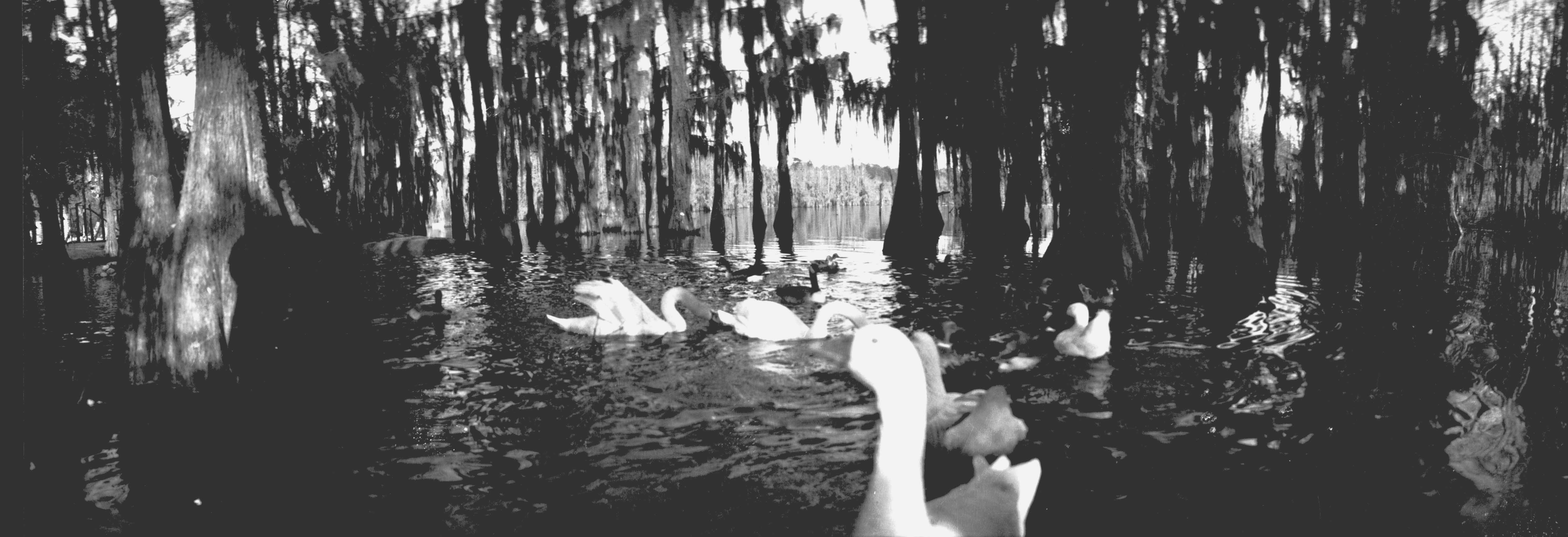
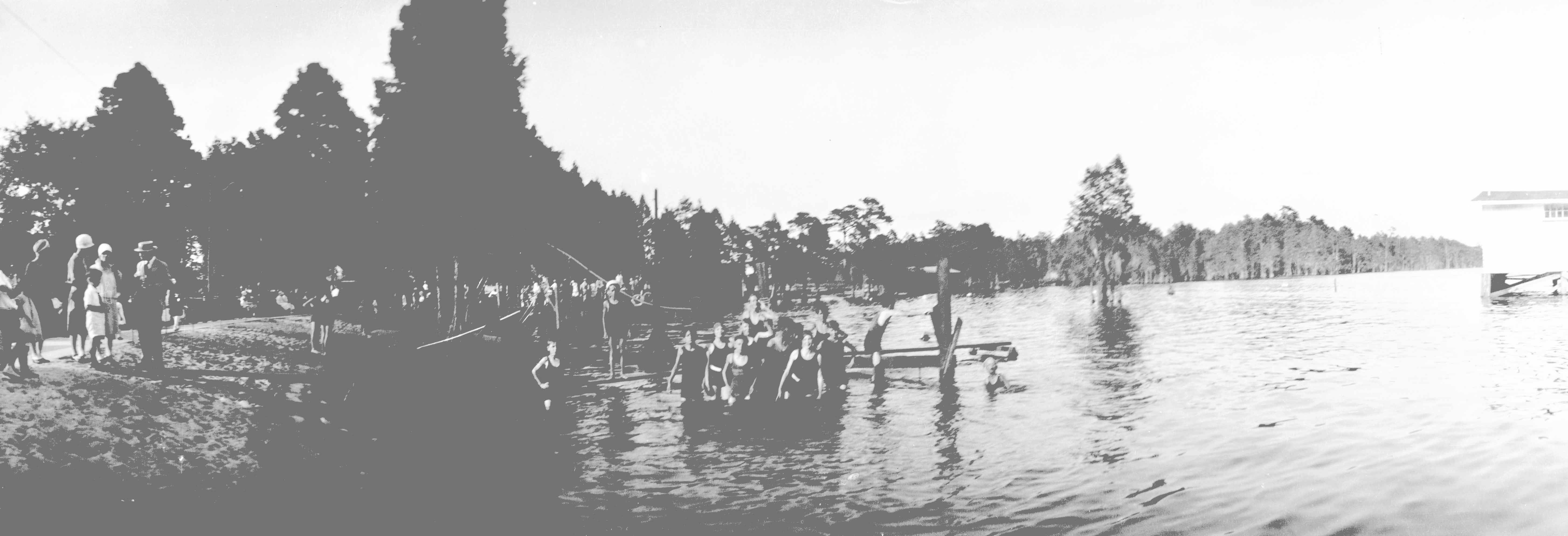
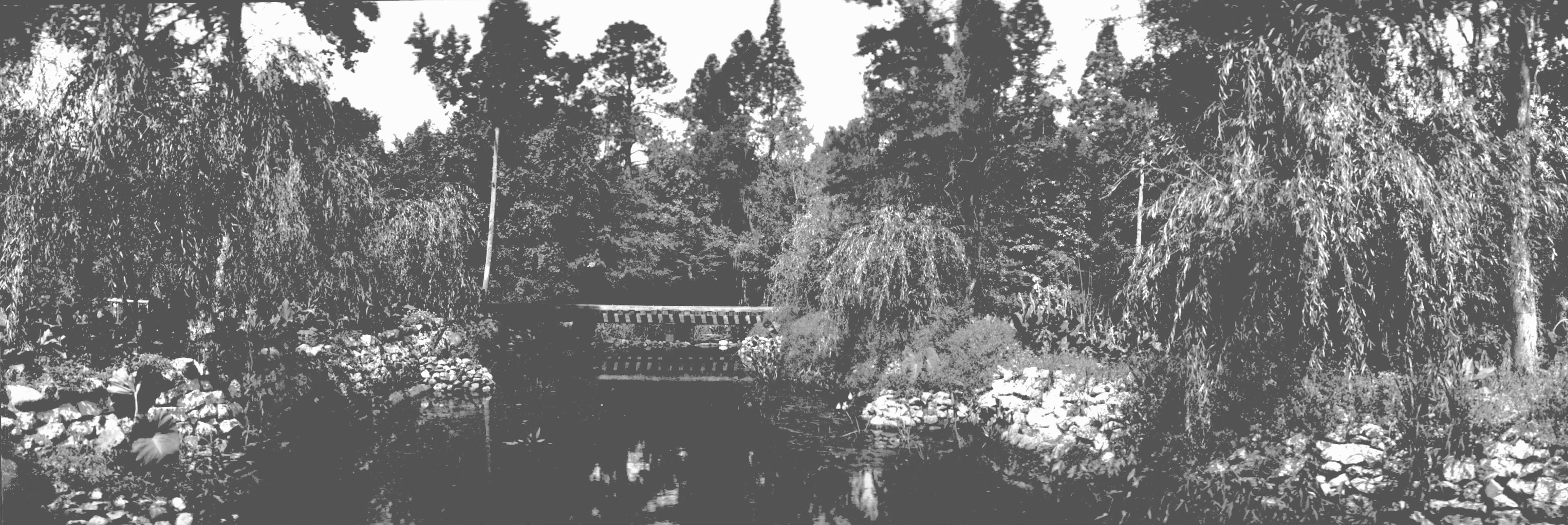




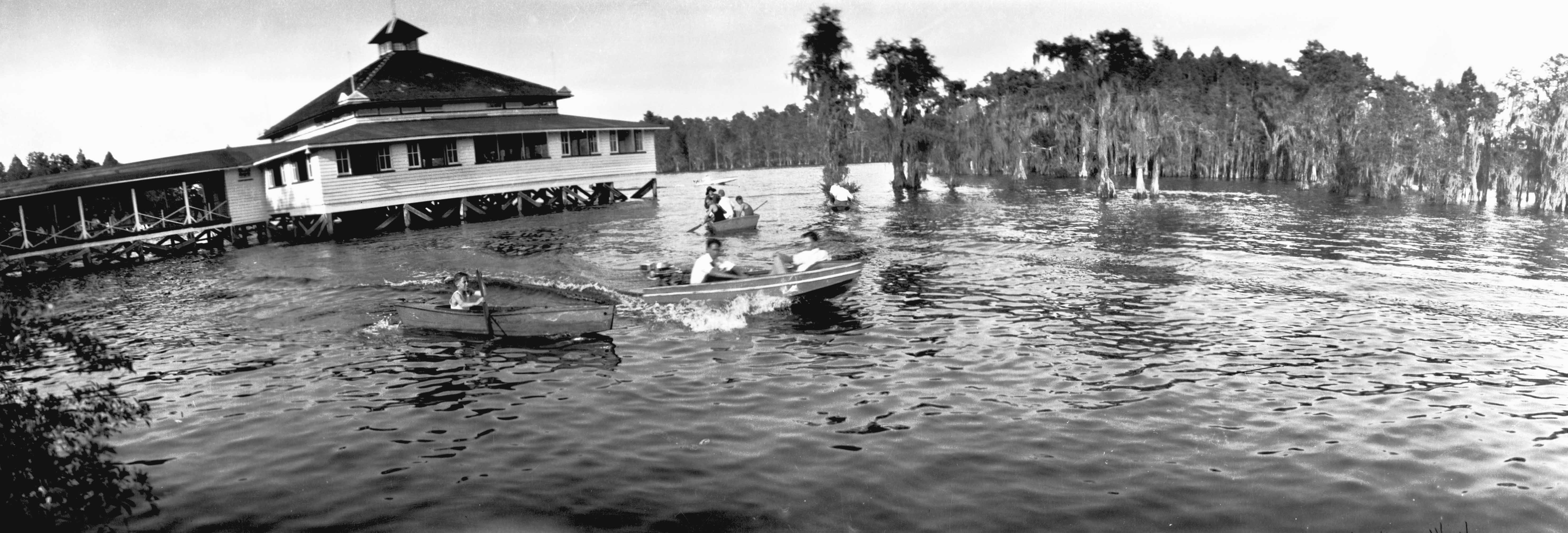

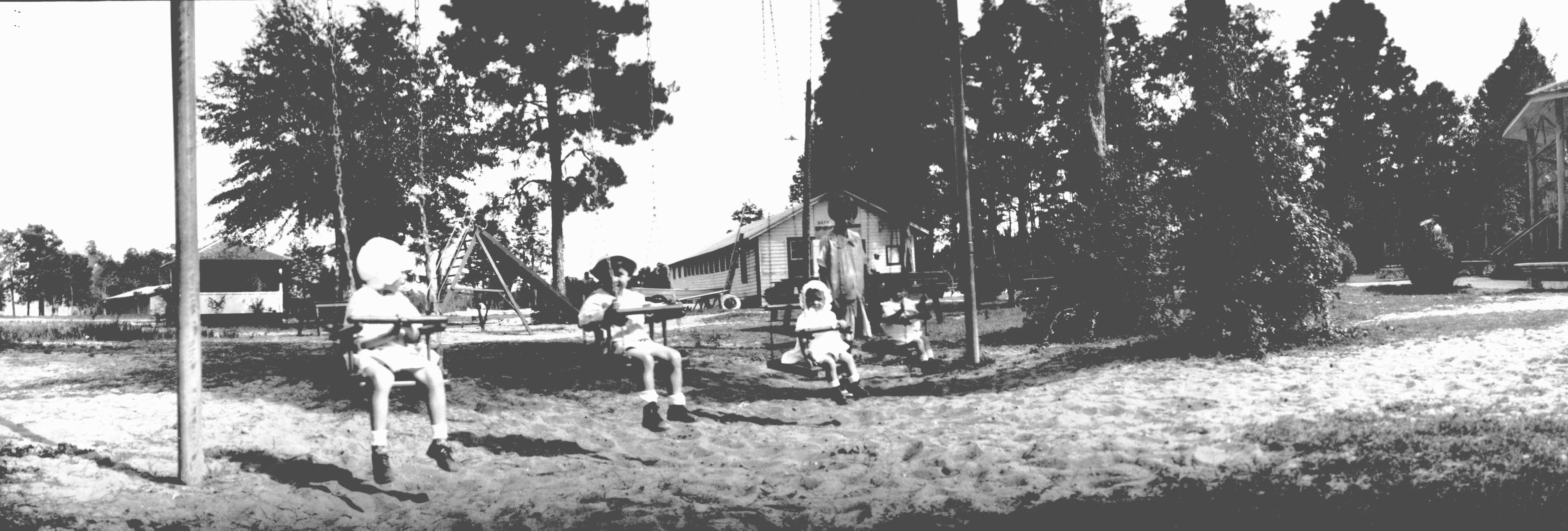
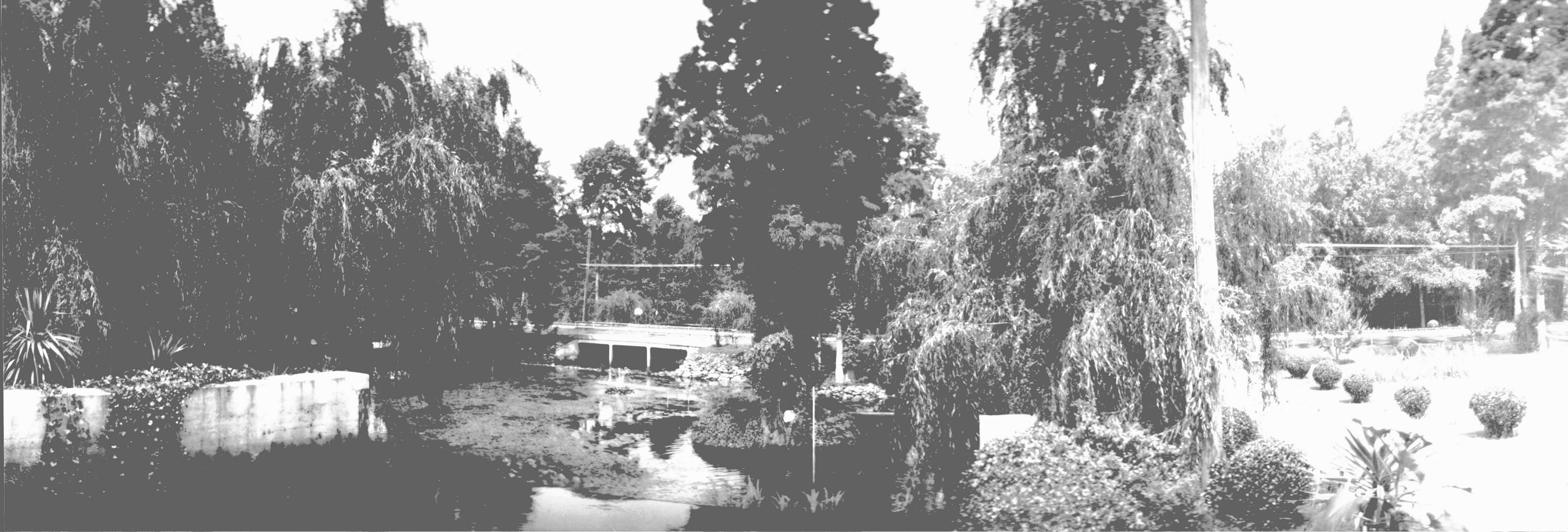
Can u tell me the name of the white double deck White boat? I just inherited a painting of it from my Grandmother. Both of whom were born here… She was 96.My children(3 boys, ages 25,19 and 13)” are 5 th generation Wilmingtonians, yet there are 6,at least. I love this ~My town and the fact,
ct that both sides of my family have so much history here. My husband of 29 yrs does as well. I wish I could send a Picture of the painting. So very Beautiful, the artist is Hester Donnelly. Please, if you can let me know about this treasure I’ve seen hanging in My Grandparents Living room the 46 yrs I’ve been around.
Sincerely,
Haley Peterson-Haynes
You may also contact me via cell or text 9104430928.
Really… Thank you so much.. What a Fabulous site <3
Hi Haley,
It was called the Showboat, a naming eclipsed when the U.S.S. North Carolina became known as THE Showboat. So glad you like the Louis T. Moore site. He was one of Greenfield Lake’s champions.
Hester Donnelly was a wonderful person, a leader in the fight to establish a permanent art gallery, a commercial artist, and an artistic sentimental chronicler of times gone by. She had a grand sense of humor and delivered it coated with Southern drawl.
– Susan